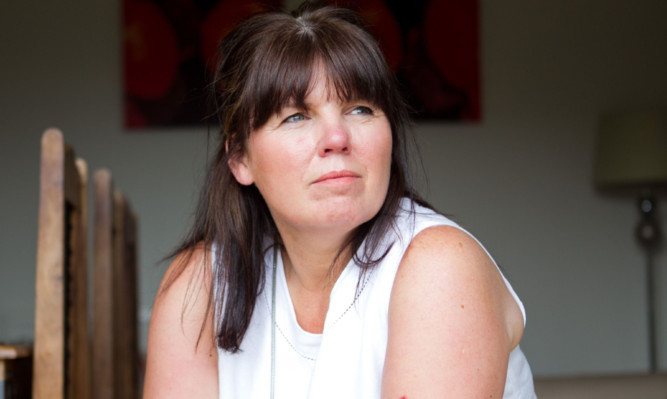
“The mountains all around me shook. For hours after there were landslides and aftershocks.”
A mum airlifted from a remote Nepalese monastery at the height of an earthquake disaster has laid bare the details of her dramatic rescue.
Ann Hardie was stranded in the mountain retreat for eight days after the disaster laid waste to the country.
During that time her plight made headlines across Britain, resulting in the UK Government launching an audacious helicopter rescue mission.
In her first interview about her ordeal, the 47-year-old has revealed every time she heard a helicopter thudding through the Himalayas, she prayed it was coming for her.
And she has also spoken of the upset she felt when she was finally plucked to safety leaving others behind to face an uncertain fate.
“Leaving the others behind was the hardest part,” she said.
“It was very emotional and very hard. As we took off I looked at their faces and burst into tears.”
Ann was in Nepal carrying out ground-breaking research on the use of meditation to halt disruptive behaviour in schoolchildren when the earthquake struck on April 25.
She hopes the research carried out in the days leading up to the disaster will see meditation rolled out in all Scottish schools.
“There were 14 in our group,” she said. “Eight Brits, four Americans, one Nepalese and a Malaysian.”
When the 7.8-magnitude quake struck “it was like a movie” said Ann.
“It sounded like cannonballs being fired,” she recalls. “The mountains all around me shook. For hours after there were landslides and aftershocks.”
Fortunately the ancient monastery offered Ann incredible protection from the disaster which has so far claimed more than 8,000 lives.
Cracks appeared in the temple’s walls, but no one was injured.
“Despite being so close to the epicentre we were unaffected,” she said.
People in the surrounding countryside were not so fortunate.
“In the mountains just a few miles away hundreds of people died,” she added.
“There was building work going on there but, after the earthquake, the workers, many of whom had families in Kathmandu, made off on foot to get home.
“I have no idea what happened to them the paths were devastated by after-shocks afterwards.”
The realisation she was a seven-day walk from the nearest village and trapped up a mountain in a quake-ravaged country thousands of miles from home, quickly took hold.
“We had to get home,” said Ann. “Not for us, but for our families.
“They were climbing the walls with worry.”
The group could only receive telephone calls, and couldn’t make any calls out so getting messages to the authorities in Kathmandu became a tortuous process.
The message for help was delivered but Ann and other group members weren’t sure they’d be rescued.
“You’d hear the helicopter and hope it was your turn to be rescued. But for days they simple flew over.
“Then one landed and they ordered all the Americans on-board and took them away.
“Everyone was in tears. We couldn’t believe we’d been left. Then three days later it was the Brits’ turn.
“Our families had been ringing the Foreign Office and newspapers to put pressure on the Government to act.
“A helicopter arrived for the Brits but the Malaysian and Nepalese in our group were told to wait. We pleaded for them to be taken too but the pilots said they couldn’t.
“It was very emotional. It must have been how the Americans felt when they left us.”
From the helicopter Ann saw just how much destruction there was.
“Villages had been wiped out,” she said.
“It was so good to get back on the plane to see my two sons, Graeme and Wayne.
“They were very strong at home coping with all the concerned calls.
“We later learned the rest of our group had been saved. A helicopter went back for them a few days later.
“That was a huge relief.”
A spokeswoman for the Foreign Office said: “Our teams worked tirelessly to locate and assist British nationals in Nepal.
“After our UK-funded helicopter intervention, Nepal army airlifts continued.
“The UK continues to play a leading role in responding to the Nepal earthquake and is currently the largest donor to the relief operation.”
Ann added: “Rescues should never be about nationalities.”

Enjoy the convenience of having The Sunday Post delivered as a digital ePaper straight to your smartphone, tablet or computer.
Subscribe for only £5.49 a month and enjoy all the benefits of the printed paper as a digital replica.
Subscribe